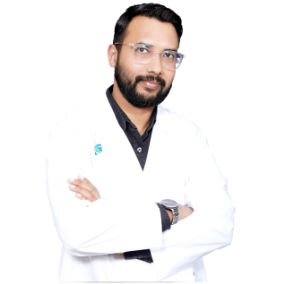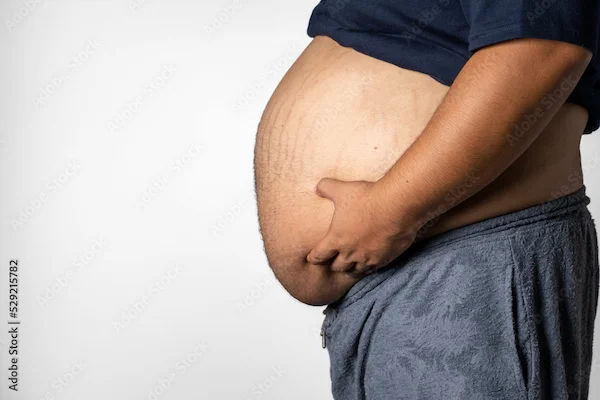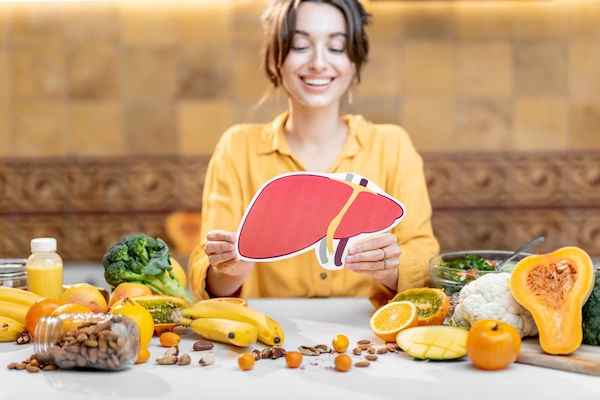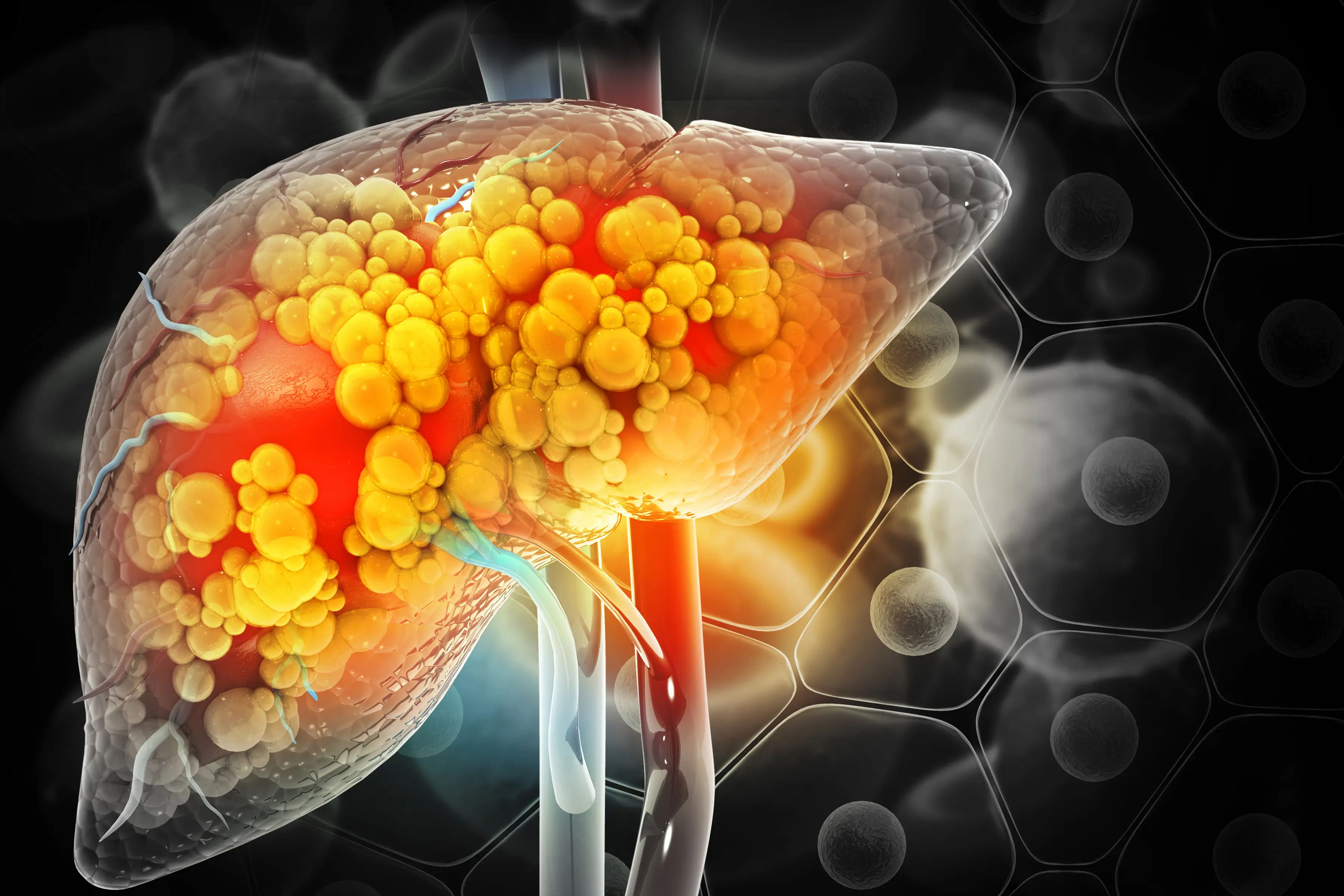Guide to the Introduction of Fatty Liver Disease
Know about the fatty liver disease, why it is important to know, causes, signs, symptoms, diagnosis and treatment options.

%20(1).webp?tr=q-80,f-webp,w-350,dpr-2,c-at_max 700w)
Introduction
Fatty liver disease is increasingly common, often silent, and very treatable when caught early. In simple terms, it happens when excess fat builds up in the liver. Over time, this can inflame the liver, cause scarring (fibrosis), and in some cases progress to cirrhosis or liver cancer.
In this introduction to fatty liver disease, you’ll learn what it is, who is at risk, how it’s diagnosed, and which treatments actually work, especially lifestyle strategies like diet and physical activity. We’ll explain key tests (like ultrasound, ALT/AST, FIB-4, FibroScan), explore emerging medications, and offer a practical action plan you can start today. If symptoms persist or you’re unsure about your risk, consider consulting a doctor online with Apollo24|7 for personalised advice and follow-up.
What is fatty liver disease? (NAFLD, MASLD, and MASH)
Fatty liver disease means excess fat has accumulated in the liver. Most people think of alcohol, but the most common form globally is driven by metabolic health rather than heavy drinking. You’ll see terms evolving: NAFLD (nonalcoholic fatty liver disease) is the older label; MASLD (metabolic dysfunction-associated steatotic liver disease) is the newer name endorsed by liver societies to highlight its metabolic roots. When fat buildup triggers ongoing inflammation and liver cell injury, it’s called MASH (metabolic dysfunction-associated steatohepatitis) previously “NASH.” MASH raises the risk of scarring (fibrosis), which can progress to cirrhosis.
Consult a Top Hepatologist for Personalised Advice
Fatty liver exists on a spectrum:
1. Simple steatosis: fat without significant inflammation; lower short-term risk, but still important to address.
2. MASH: fat plus inflammation and injury; higher risk of fibrosis.
3. Advanced fibrosis/cirrhosis: extensive scarring; risk of liver failure and cancer.
Fatty liver disease is as much a whole-body metabolic condition as a liver condition. Insulin resistance, visceral fat, sleep, stress, and even the timing of meals influence how fat is deposited in the liver. This means small, sustained lifestyle changes can yield outsized improvements in liver fat and inflammation.
Why fatty liver disease matters
While many people feel fine, untreated fatty liver disease can lead to serious issues. Inside the liver, chronic inflammation can drive scarring (fibrosis). Over the years, fibrosis may progress to cirrhosis (severe scarring), impairing liver function. People with cirrhosis need close monitoring for portal hypertension complications and hepatocellular carcinoma (liver cancer).
Outside the liver, fatty liver is a powerful signal of cardiometabolic risk. It often travels with obesity, type 2 diabetes, high blood pressure, and abnormal cholesterol, together termed metabolic syndrome. Cardiovascular disease is the leading cause of death in people with fatty liver disease. The condition is also associated with chronic kidney disease, polycystic ovary syndrome (PCOS), and obstructive sleep apnea.
Improvements in weight (even 5%), cardiorespiratory fitness, and glycemic control can reverse steatosis and reduce inflammation. Achieving 7–10% weight loss is linked with the resolution of steatohepatitis and improvement in fibrosis for many patients.
Who is at risk?
The most important driver is metabolic dysfunction. Risk rises with:
1. Type 2 diabetes or prediabetes
2. Central obesity or overweight (especially visceral fat)
3. High triglycerides or low HDL cholesterol
4. High blood pressure
5. Sedentary lifestyle and a highly processed, high-sugar diet
Genetics matter too. Variants like PNPLA3 and TM6SF2 increase susceptibility to liver fat and fibrosis. They partly explain why some people develop “lean” fatty liver disease despite a normal body weight.
Symptoms: what you might (and might not) notice
Most people with fatty liver disease have no symptoms. When symptoms occur, they’re often subtle and nonspecific: fatigue, mild right upper abdominal discomfort, or a sense of fullness. Some notice skin tags, acanthosis nigricans (dark, velvety skin in skin folds), or weight gain as signs of insulin resistance rather than liver damage per se.
Red flags that need prompt evaluation:
1. Jaundice (yellowing of eyes/skin)
2. Abdominal swelling, leg oedema
3. Easy bruising or confusion
4. Severe, persistent abdominal pain
5. Unintended weight loss
Because symptoms are unreliable, routine screening is reasonable in higher-risk groups (type 2 diabetes, obesity, metabolic syndrome). If you’ve had elevated liver enzymes (ALT/AST), high triglycerides, or an ultrasound showing steatosis, you’ll benefit from further evaluation to assess fibrosis risk
How do doctors diagnose fatty liver disease?
Diagnosis starts with history and exam, focusing on alcohol intake, medications, metabolic risk, and symptoms. Basic laboratory tests include ALT, AST, GGT, alkaline phosphatase, bilirubin, platelet count, fasting glucose or HbA1c, and a lipid profile. Doctors will also check for other liver diseases when indicated (e.g., hepatitis B/C, autoimmune markers).
Imaging:
1. Ultrasound: widely available; detects moderate-to-severe liver fat. It’s often the first test. Sensitivity drops with mild steatosis.
2. Transient elastography (FibroScan): measures liver stiffness (fibrosis) and controlled attenuation parameter (CAP) for fat. It’s noninvasive and helpful to stratify risk.
3. MRI-PDFF: most accurate for quantifying liver fat in research/selected cases.
Get Your Symptoms Assessed
Noninvasive fibrosis scores:
1. FIB-4 uses age, ALT, AST, and platelet count. Low scores rule out advanced fibrosis; high scores prompt elastography or specialist referral.
2. NAFLD Fibrosis Score similarly stratifies risk.
Liver biopsy is now reserved for selected cases: uncertain diagnosis, suspected advanced disease, or when confirming inflammation and fibrosis will change management. Most patients can be managed without a biopsy, thanks to noninvasive tests.
Understanding your numbers and stage
Liver enzymes (ALT, AST) can be normal even when fatty liver and fibrosis are present. That’s why relying on enzymes alone can miss disease. Patterns that raise concern include persistently elevated ALT/AST, higher AST relative to ALT (especially in advanced disease), low platelets, and elevated bilirubin in later stages.
Fibrosis stages (F0–F4) describe scarring severity:
1. F0: none
2. F1–F2: mild to moderate
3. F3: advanced (bridging fibrosis)
4. F4: cirrhosis
Why staging matters: fibrosis stage best predicts long-term outcomes. Many clinics use a two-step approach: first, calculate FIB-4. If FIB-4 is low, you likely don’t have advanced fibrosis; if intermediate or high, follow with elastography (FibroScan).
Monitoring frequency:
1. Low-risk patients (low FIB-4, low stiffness): reassess labs and risk factors every 6–12 months.
2. Indeterminate/high risk: get elastography; if elevated, consider hepatology referral and more frequent follow-up.
3. Cirrhosis: specialist care, ultrasound surveillance for liver cancer every 6 months.
Treatment that works: lifestyle first
Lifestyle change is the cornerstone. Even a 5% weight loss can reduce liver fat; 7–10% weight loss is associated with resolution of steatohepatitis and regression of fibrosis in many patients. Aim for steady, sustainable progress: 0.5–1 kg per week is a safe pace.
Exercise:
1. Aerobic: 150–300 minutes/week of moderate intensity (e.g., brisk walking, cycling). Even without weight loss, exercise reduces liver fat.
2. Resistance training: 2–3 sessions/week improves insulin sensitivity and muscle mass, supporting glycemic control.
3. NEAT (non-exercise activity thermogenesis): increase daily movement—take stairs, stand hourly, add short walks after meals.
Sleep and stress:
1. Target 7–9 hours of sleep; inconsistent sleep worsens insulin resistance.
2. Time-restricted eating (12-hour overnight fast) may help improve insulin sensitivity if it fits your lifestyle.
3. Manage stress with mindfulness or breathing practices; chronic stress elevates cortisol, promoting visceral fat.
If after 8–12 weeks of consistent effort you’re not seeing improvements in energy, waistline, or labs, book a follow-up with a clinician. If your condition does not improve after trying these methods, book a physical visit to a doctor with Apollo24|7 to reassess your plan or consider additional treatments.
Diet strategies for fatty liver disease
There’s no single “liver diet,” but patterns matter. The Mediterranean-style diet rich in vegetables, fruits, legumes, whole grains, nuts, olive oil, fish, and modest dairy has strong evidence for improving insulin sensitivity, triglycerides, and liver fat. It is flexible, flavorful, and sustainable.
What to emphasise:
1. Nonstarchy vegetables at most meals
2. Lean proteins: fish, poultry, legumes, tofu
3. Whole grains: oats, brown rice, quinoa
4. Healthy fats: extra-virgin olive oil, nuts, seeds
5. Coffee (2–3 cups/day if tolerated) is associated with lower liver fibrosis and cancer risk
What to limit:
1. Sugar-sweetened beverages and fruit juices (fructose drives liver fat)
2. Refined carbohydrates (white breads, pastries)
3. Highly processed snacks and processed meats
4. Excess alcohol
Meal timing tips:
1. Front-load calories earlier in the day if possible
2. Add a 10–15 minute walk after meals to blunt glucose spikes
Supplements: Omega-3s help triglycerides, but aren’t a substitute for diet. Vitamin E (800 IU/day) is used in select non-diabetic adults with biopsy-proven MASH.
Medications and procedures
No single drug replaces lifestyle change, but options exist for select patients.
Current and emerging therapies:
1. Pioglitazone: can improve steatohepatitis in people with diabetes or biopsy-proven disease; monitor for side effects.
2. Vitamin E: for select non-diabetic adults with biopsy-proven MASH; discuss risks (e.g., bleeding risk at high doses).
3. GLP-1 receptor agonists (e.g., semaglutide): approved for diabetes/obesity; promote weight loss and show promise in resolving steatohepatitis in trials, though not yet specifically approved for MASH.
4. Resmetirom (Rezdiffra): FDA-approved in 2024 for adults with MASH with moderate to advanced fibrosis (F2–F3) to reduce liver inflammation and scarring measures, used alongside diet and exercise. It targets thyroid hormone receptor-beta pathways in the liver.
Bariatric surgery and endoscopic weight-loss procedures: For people with severe obesity, these interventions can produce substantial weight loss and improvements in steatohepatitis and fibrosis. Candidacy depends on overall health, BMI, and comorbidities.
Living well with fatty liver: alcohol, medications, and prevention
Alcohol: Even modest alcohol can add to liver stress. If you have MASH or fibrosis, many experts advise avoiding alcohol entirely. If you drink, keep within low-risk limits and discuss with your doctor based on your fibrosis stage.
Medications and toxins: Use acetaminophen within recommended limits; avoid unnecessary herbal products with hepatotoxic potential. Always disclose supplements.
Vaccines and infections: Stay up-to-date on hepatitis A and B vaccines if non-immune. Treat hepatitis B or C if present—coexisting viral hepatitis accelerates progression.
A 12-week action plan:
• Weeks 1–4: establish defaults. Remove sugar-sweetened beverages; add daily 20–30 minute walks; start a food/movement log; schedule labs (ALT/AST, lipid profile, HbA1c). Apollo24|7 can arrange home collection for convenience.
• Weeks 5–8: increase exercise to 150–210 minutes/week; begin 2 resistance sessions/week; build Mediterranean-style meals; track waist circumference weekly.
• Weeks 9–12: target 5–7% weight loss if indicated; reassess energy, sleep, and stress; repeat key labs if advised; consider FibroScan if initial risk was intermediate/high.
Consult a Top Hepatologist for Personalised Advice
Consult a Top Hepatologist for Personalised Advice

Dr. Srinivasa Reddy
Hepatologist
12 Years • MBBS, MD (General Medicine), DM (Hepatology),ASGE
Hyderabad
Myra Liver & Gastro Care, Hyderabad

Dr. E Prabhakar Sastry
General Physician/ Internal Medicine Specialist
40 Years • MD(Internal Medicine)
Manikonda Jagir
Apollo Clinic, Manikonda, Manikonda Jagir
(150+ Patients)

Dr. Sushith C
General Physician
2 Years • MBBS
Bengaluru
PRESTIGE SHANTHINIKETAN - SOCIETY CLINIC, Bengaluru

Dr U V U Vamsidhar Reddy
Hepatologist
10 Years • MBBS, MD (JIPMER), DM (Hepatology, PGIMER)
Chennai
Apollo Hospitals Greams Road, Chennai
(75+ Patients)

Dr. Aakash Garg
Gastroenterology/gi Medicine Specialist
12 Years • MBBS, DNB (Medicine), DrNB (Gastroentrology).
Bilaspur
Apollo Hospitals Seepat Road, Bilaspur
(150+ Patients)
Consult a Top Hepatologist for Personalised Advice

Dr. Srinivasa Reddy
Hepatologist
12 Years • MBBS, MD (General Medicine), DM (Hepatology),ASGE
Hyderabad
Myra Liver & Gastro Care, Hyderabad

Dr. E Prabhakar Sastry
General Physician/ Internal Medicine Specialist
40 Years • MD(Internal Medicine)
Manikonda Jagir
Apollo Clinic, Manikonda, Manikonda Jagir
(150+ Patients)

Dr. Sushith C
General Physician
2 Years • MBBS
Bengaluru
PRESTIGE SHANTHINIKETAN - SOCIETY CLINIC, Bengaluru

Dr U V U Vamsidhar Reddy
Hepatologist
10 Years • MBBS, MD (JIPMER), DM (Hepatology, PGIMER)
Chennai
Apollo Hospitals Greams Road, Chennai
(75+ Patients)

Dr. Aakash Garg
Gastroenterology/gi Medicine Specialist
12 Years • MBBS, DNB (Medicine), DrNB (Gastroentrology).
Bilaspur
Apollo Hospitals Seepat Road, Bilaspur
(150+ Patients)
More articles from Fatty Liver
Frequently Asked Questions
1) Can fatty liver disease be reversed?
Yes. Steatosis and even steatohepatitis can often improve with 7–10% weight loss, regular exercise, and better metabolic control. Noninvasive monitoring (FIB-4, FibroScan elastography) helps track progress.
2) What’s the best diet for fatty liver disease?
A Mediterranean-style diet is well supported. It emphasises vegetables, whole grains, legumes, fish, and olive oil while limiting sugar-sweetened beverages and refined carbs—key steps in a fatty liver diet plan.
3) Do I need a liver biopsy?
Most people don’t. Doctors start with labs, ultrasound, and fibrosis scores like FIB-4. If advanced disease is suspected, transient elastography (FibroScan) is often next. Biopsy is reserved for select cases.
4) Are there medications for MASLD/MASH?
Some options exist for select patients (e.g., pioglitazone, vitamin E). Resmetirom was approved in 2024 for MASH with fibrosis (F2–F3). GLP-1 medicines like semaglutide can aid weight loss and show promise for liver disease.
5) Should I avoid alcohol completely?
If you have MASH or fibrosis, many specialists recommend avoiding alcohol. If you drink, discuss safe limits with your clinician based on your liver stage and other risk factors.


.webp)


